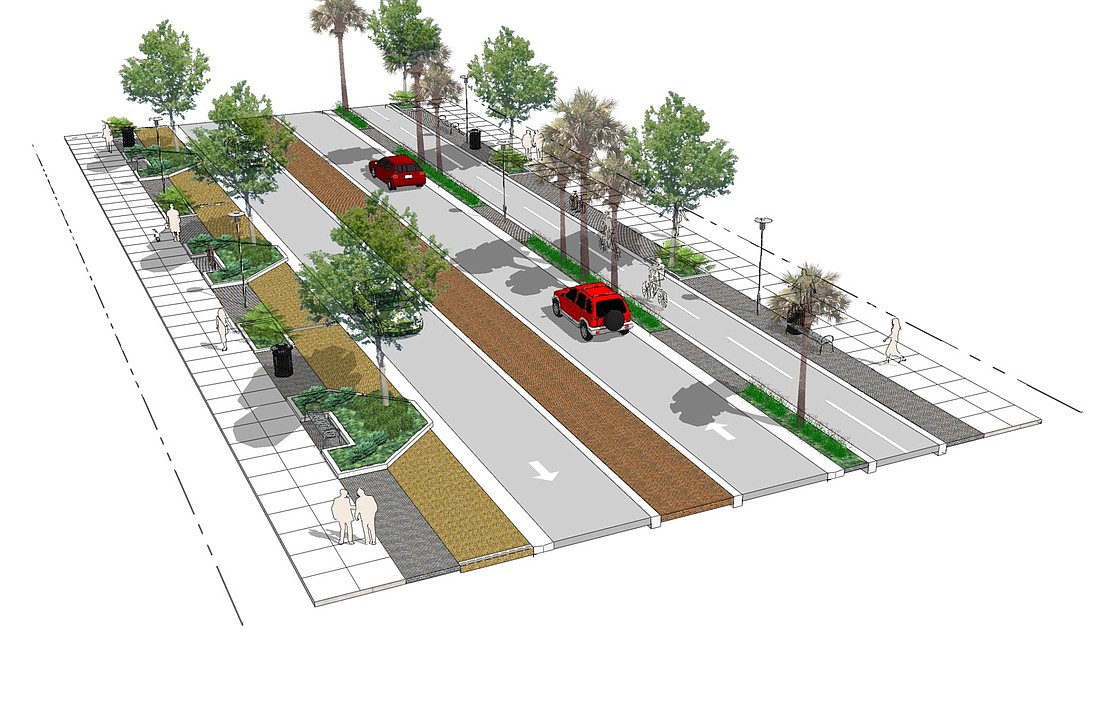- April 4, 2025
-
-
Loading

Loading

Winter Garden’s plans to redesign Dillard Street are steadily moving forward.
During the Sept. 27 City Commission meeting, city leaders authorized a contract with a consulting engineering firm called Cribb Phillbeck Weaver Group for a not-to-exceed amount of nearly $1.49 million.
The firm will be tasked with preparing detailed, technical designs for the Dillard Street Reconstruction Project that abide by the Florida Department of Transportation’s policies and align with the conceptual design provided by the city’s design contractor for the project, Toole Design Group.
During the meeting, Toole Design Group presented city leaders with the finished conceptual designs for Dillard Street Reconstruction Project, which focuses on the mile-long stretch of road from Plant Street to West Colonial Drive.
The concept design envisions an environmentally, bicyclist- and pedestrian-friendly three-lane corridor for the future Dillard Street intended to encourage slower speeds, said Ian Lockwood, a Liveable Transportation Engineer with Toole Design Group.
Lockwood emphasized his firm has done everything it could to incorporate the requests of the community as expressed in prior community workshops. According to Lockwood, community input revealed a desire for a beautiful roadway with slower speeds that was easy for pedestrians and bicyclists to cross, but also attracted investment and included a connection to the West Orange Bike Trail and shade-providing trees.
“Right now, (Dillard Street) is a somewhat hostile, fast and dangerous street, so we’re trying to make it a friendly, green, multi-modal street that would be attractive to most people,” Lockwood said. “And we completed the original concept for that, which has been enjoying a lot of community support. Our job now is to help oversee the detailed engineering so that the intent makes it all the way through to construction and nothing gets lost in translation.”
According to the conceptual design, the future Dillard Street may include three roundabouts located at Plant Street, Smith Street and Story Road. It also would be constructed with permeable porous asphalt, which allows stormwater to get down to the water cable and reduces flooding in lakes and retention ponds, Lockwood said.
The design firm also proposed the addition of a dedicated two-way bike trail that connects to the West Orange Trail and about a dozen pedestrian crosswalks.
Lockwood said the three proposed roundabouts are preferable to signalized intersections if the goal is safety and aesthetics, because they have been shown to reduce traffic crashes and encourage slower speeds.
“Signals actually encourage people to either speed up before the light turns red or stop completely, and you get rear-end crashes,” he said. “And what roundabouts do is they create a slow and steady speed profile. Most of the time, nobody would ever have to stop at those roundabouts — unless there’s a pedestrian there or you have to wait for someone already in the roundabout. So it keeps traffic flowing but at a safe speed.”
Dillard also might become a three-lane roadway, with one northbound and one southbound, plus turn lanes, he said. Given the low volume of daily traffic the road receives, Lockwood’s firm does not see a need for more lanes. They believe the widening of the road years ago was a mistake, he said.
“The intersection at 50 — where the street’s the busiest — only has a double left-turn lane coming into it from the west, a single right-hand turn from the east, and a single through lane from the south,” he said. “And those lanes only get green time for a small portion of the traffic signal, so no matter how hard you try, you can never deliver more than one lane for the traffic through Dillard Street. You can’t get more traffic than the signal can deliver. ... So there’s no way you can get more than one lane’s worth of traffic.”